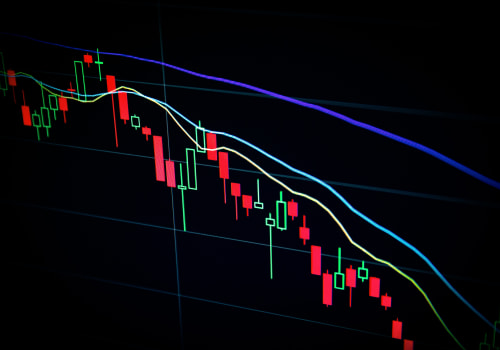Binary options trading based on currencies is becoming increasingly popular among traders, as they offer the potential for high returns in a short period of time. Currency-based binary options offer traders the opportunity to speculate on the value of one currency against another, with the potential to generate substantial profits. This article provides an overview of currency-based binary options, including how they work, the different types of trades available, and the risks and rewards associated with them. Trading currency-based binary options can be advantageous for those looking to capitalize on exchange rate fluctuations, as well as those who prefer to trade in a variety of markets.
The key is to know the risks and rewards before entering into any trade. This article will discuss the basics of currency-based binary options trading and provide an overview of the different types of trades available.
Currency-based Binary Options
are a type of financial instrument that allow traders to speculate on the direction of exchange rate movements. This type of trading is becoming increasingly popular due to its simplicity and potential for high returns. In this article, we will provide an overview of currency-based binary options, including how to get started, key terms and strategies, and potential risks. Binary options are a type of derivative instrument that allow traders to make profit from predicting the future direction of the price of an underlying asset.They are relatively straightforward to understand and can be used to speculate on both short-term and long-term movements. When trading currency-based binary options, traders are speculating on the future direction of the exchange rate between two currencies.
Types of Binary Options
When trading currency-based binary options, traders have several different types of options to choose from. These include call/put options, touch/no touch options, range options, and 60 second options. Each type of option has different benefits and risks associated with it.- Call/Put Options – With this type of option, traders are speculating on whether the price of the underlying asset will be higher or lower than the current price at the time of expiration.
If the trader believes the price will be higher, they will purchase a “call” option. If they believe the price will be lower, they will purchase a “put” option.
- Touch/No Touch Options – With this type of option, traders are speculating on whether the price of the underlying asset will reach a certain level (the “touch” level) or not (the “no touch” level) within a predetermined time frame. If the trader believes the asset will reach the touch level, they will purchase a “touch” option. If they believe the asset will not reach the touch level, they will purchase a “no touch” option.
- Range Options – With this type of option, traders are speculating on whether the price of the underlying asset will stay within a predetermined range or not within a predetermined time frame.
If the trader believes the asset will stay within the range, they will purchase a “range” option. If they believe the asset will not stay within the range, they will purchase a “no range” option.
- 60 Second Options – With this type of option, traders are speculating on whether the price of the underlying asset will rise or fall within a 60 second time frame. If the trader believes the price will rise, they will purchase a “call” option. If they believe the price will fall, they will purchase a “put” option.
These include:
- Asset – The underlying asset being traded is usually a currency pair such as EUR/USD or GBP/USD.
- Expiration Time – This is the time at which the trade will expire and either result in a profit or loss for the trader.
- Strike Price – This is the price at which the option was purchased and it is used to determine whether or not a trade was successful.
- Return Rate – This is the rate at which profits or losses are calculated and it is usually expressed as a percentage.
- Payout – This is the amount of money that is paid out when a trade is successful.
- Technical Analysis – Technical analysis is used to identify trends in exchange rate movements by looking at past data such as support and resistance levels, chart patterns, and moving averages. Traders can then use this information to make predictions about future price movements.
- Hedging Against Currency Fluctuations – Hedging involves taking out two opposite positions in order to reduce risk. For example, if traders think that EUR/USD is going to increase in value then they could buy EUR/USD and sell USD/CHF simultaneously in order to hedge against any losses from EUR/USD if it decreases in value instead.
- News Events – Taking advantage of news events can also be used as a strategy when trading currency-based binary options.
For example, if there is an announcement about an interest rate change then traders could take out positions based on their predictions about how this might affect exchange rates.
- Losses due to Market Volatility – Currency markets can be highly volatile and prices can move quickly which can result in losses for traders who are not prepared for sudden changes in market conditions.
- Not Understanding Terms and Conditions – It is important that traders understand all of the terms and conditions associated with a trade before entering into it as these can affect potential returns.
- Using Too Much Leverage – Using too much leverage can increase risk as it amplifies potential losses as well as profits.
Getting Started with Currency-based Binary Options Trading. Getting started with currency-based binary options trading is relatively straightforward. The first step is to research brokers in order to find one that suits your needs. Once you have chosen a broker you will need to open an account and deposit funds.
You should then select an appropriate strategy for your trading goals and start placing trades. Finally, you should ensure that you are using risk management tools such as stop losses and take profit orders in order to manage your risk exposure.
Getting Started With Binary Options Trading
Before getting started with currency-based binary options trading, there are a few steps that need to be taken. First, traders need to open an account with a broker that offers currency-based binary options. The broker will provide access to the trading platform where traders can place orders and view real-time price quotes.Once the account is open and funded, traders need to select the currency pair they wish to trade. They also need to set the expiry time for their trade and decide on the amount of money they want to invest. Next, traders need to decide on the type of binary option they want to trade. There are two main types of currency-based binary options: call/put and one-touch. With a call/put option, traders are betting on the direction of the exchange rate movement.
If the exchange rate goes up, traders will make a profit if they bought a call option; if it goes down, they will make a profit if they bought a put option. With a one-touch option, traders are betting on whether the exchange rate will reach a predetermined level before the expiry time. Finally, traders need to decide how much money they want to invest in each trade. It is important to remember that binary options trading carries a high degree of risk and losses can exceed deposits. Therefore, it is important to manage risk by investing only what you can afford to lose.
Binary Options Trading Strategies
Types of Currency-based Binary Options StrategiesWhen it comes to trading currency-based binary options, there are a variety of strategies that traders can use.Some of the most popular strategies include the following:Trend Trading: Trend trading is a strategy that involves following established trends in the market in order to make a profit. If the trend is going up, traders will buy “call” options and if the trend is going down, they will buy “put” options. The key to trend trading is to be able to identify new trends in the market early on so that you can take advantage of them.
Range Trading:
Range trading is a strategy where traders set two price boundaries and then wait for the exchange rate to move within those boundaries. If the rate moves outside of the boundaries, then the trader can execute a trade accordingly.This type of strategy works best when the market is range-bound and not trending.
Reversal Trading:
Reversal trading involves looking for points in the market where there is a shift in sentiment and then executing trades accordingly. This type of strategy is best used when the market is either range-bound or trending. It involves understanding how sentiment can shift quickly in the market and taking advantage of those shifts.Scalping:
Scalping is a strategy where traders look for small price movements in order to make a profit. This type of strategy works best when the market is trending and there is little volatility.Scalping requires a lot of patience and attention to detail, as even small movements can add up over time.
Hedging:
Hedging is a strategy used to protect against potential losses. This involves taking an offsetting position in another currency pair or asset class in order to minimize the risk of losses if the original position goes against you. It can be an effective way to protect against losses while still giving traders the opportunity to make profits.Risks Associated With Binary Options Trading
When trading binary options, there are a number of potential risks that should be taken into consideration. These include the potential for market volatility, the potential for the price of the underlying asset to move in an unexpected direction, and the risk of losing money due to an incorrect prediction.However, these risks can be mitigated by taking certain precautions. Firstly, it is important to ensure that you understand the basics of how binary options work before you start trading. Make sure that you understand the risks associated with each type of option and be sure to do your research before placing any trades. It is also important to ensure that you are using a reputable broker with a good track record.
Ensure that they offer reliable customer support and have a good reputation in the industry. Additionally, it is important to ensure that you have adequate risk management strategies in place. This includes setting stop losses and taking profits at predetermined points. Finally, it is important to use a variety of different strategies when trading binary options, such as trend following, counter-trending, and hedging.
This will help to reduce the risk of losses due to incorrect predictions.
Types of Binary Options
When it comes to currency-based binary options, there are several different types that traders can choose from. These include high/low, one touch, boundary, and range options. Each type offers its own benefits and risks, so it’s important to understand the differences before making a trading decision.High/Low Options:High/Low options are the most common type of binary options. With this type of option, traders are betting on whether the price of an asset will finish above or below the current price when the option expires. If the asset finishes in the money, the trader will receive a payout.
One Touch Options:
One touch options are a type of binary option that pays out a fixed return if the underlying asset touches or exceeds a predetermined level.This type of option is beneficial for traders who believe that an asset’s price will breach a certain level but don’t necessarily want to take the risk of predicting the precise expiry time.
Boundary Options:
Boundary options are another type of binary option that pays out a fixed return if the underlying asset’s price remains within a predetermined range at expiry. This type of option can be beneficial for traders who believe that an asset’s price will remain within a certain range but don’t necessarily want to take the risk of predicting the precise expiry time.Range Options:
Range options are a type of binary option that pays out a fixed return if the underlying asset’s price remains within two predetermined levels at expiry.This type of option can be beneficial for traders who believe that an asset’s price will remain within a certain range but don’t necessarily want to take the risk of predicting the precise expiry time. In addition to these types of binary options, there are also other variations such as ladder options and pair options. It is important to understand all of the different types and their potential benefits and risks before making any trading decisions.
Key Terms in Binary Options Trading
Call Option – A call option is a type of binary option where the trader predicts that the price of the underlying asset will rise by the expiration date. If the prediction is correct, the trader will receive a predetermined profit.Put Option
– A put option is a type of binary option where the trader predicts that the price of the underlying asset will fall by the expiration date.Strike Price – The strike price is the price of the underlying asset at which the option is bought or sold. This is also sometimes referred to as the exercise price.
Expiration Date
– The expiration date is the date at which the option expires and becomes worthless.Premiums
– Premiums are fees paid by traders when buying or selling binary options.These are typically set as a percentage of the underlying asset’s value.
In-the-Money (ITM)
– If an option expires in-the-money, it means that it has expired at a price that is higher than the strike price for a call option or lower than the strike price for a put option.Out-of-the-Money (OTM)
– If an option expires out-of-the-money, it means that it has expired at a price that is lower than the strike price for a call option or higher than the strike price for a put option.At-the-Money (ATM)
– If an option expires at-the-money, it means that it has expired at a price that is equal to the strike price.Time Value – Time value is the amount of money that an option is worth due to its remaining time before expiration. The longer an option has before expiration, the more valuable it becomes.
Volatility
– Volatility is a measure of how much the underlying asset’s price can fluctuate over time. This can affect both potential profits and losses from trading binary options.Profit/Loss Percentage – The profit/loss percentage is the amount of money that will be earned or lost on an investment in a binary option, expressed as a percentage of the original investment amount. Currency-based binary options trading is an increasingly popular form of financial speculation due to its simplicity and potential for high returns. However, it is important to understand the key terms, strategies, and risks involved in binary options trading before getting started. This article provided an overview of currency-based binary options, including types of binary options, key terms in binary options trading, binary options trading strategies, risks associated with binary options trading, and getting started with binary options trading.






